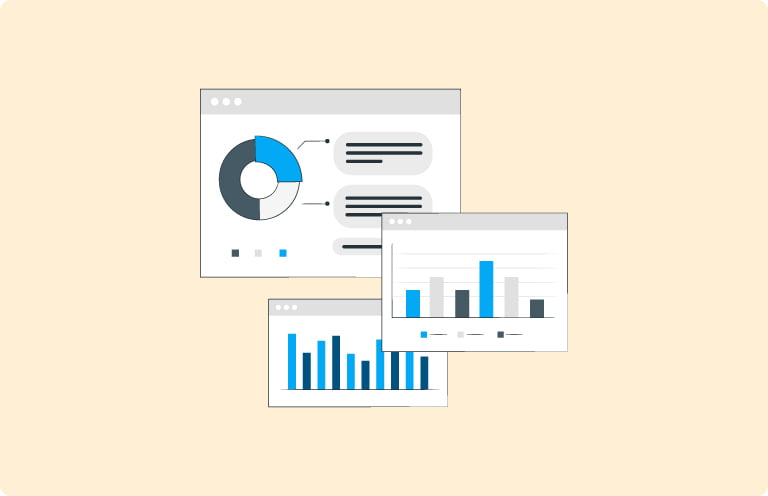Creating predictive analytics in SEO

If you’re reading this, you’re probably as fascinated by the world of SEO AND data as I am. But have you ever thought about how to go a step beyond the usual tactics? That’s where predictive analytics comes in. In this article, we dive deep into the world of predictive analytics in SEO. I’m going to talk about what it is, why it’s important, and how it differs from the data analysis you may already be familiar with.
The importance of predictive analytics in SEO
In an age where data is the new oil, predictive analytics can be the turbo that takes your SEO strategy to the next level. It’s not just about reacting to trends, but anticipating them. That way you can always be one step ahead of your competitors.
What is predictive analytics?
Predictive analytics may sound like a buzzword, but it is a powerful tool you really need to know. In simple terms, predictive analytics is the use of data, statistical algorithms and machine learning techniques to identify future outcomes based on historical data. The idea is to go beyond what happened, to make a best educated guess about what will happen in the future.

How it differs from traditional data analysis
Traditional data analysis looks at what happened in the past. It is reactive; it tells you what has happened, but not what is going to happen. Predictive analytics, on the other hand, is proactive. It uses the data you have to generate insights that can help you plan future strategies.
So, are you ready to take your SEO game to the next level with predictive analytics? Keep reading as we have much more to discuss!
Read more about performing predictive analysis in SEO
- How do I perform an SEO check for a website?
- How do I perform an SEO analysis of a website?
- How do I perform an SEO content analysis?
- How do I conduct a competitor analysis for SEO?
- How do I perform a technical SEO analysis?
Why predictive analytics is important for SEO
If you think SEO is only about optimizing keywords and building backlinks, you’re wrong. Predictive analytics can be a gamechanger for your SEO strategy. Let’s see why.
Risk reduction
No one likes unpleasant surprises, especially when it comes to declining rankings or traffic. With predictive analytics, you can identify potential problems early and take proactive measures. This is how you minimize risk and keep your strategy on track.
Identification of growth opportunities
Where are the untapped opportunities in your market? What keywords will be trending in the future? Predictive analytics can help you answer these questions so you can focus on areas with the highest growth potential.
Convincing the right stakeholders
It’s one thing to believe in the power of SEO, but it’s quite another to convince others in your organization. With hard data and predictive insights, you can make a compelling argument for more investment in SEO.

By understanding, with the right stakeholders, what the benefit of a particular investment in SEO can be, you can convince them of this. Note that each stakeholder also requires a different approach. Please refer to this article.
How predictive analytics works
Now that you know why predictive analytics is important, you may be wondering how it actually works. Below you will find the different steps (quite theoretical).
Data collection
Everything starts with data. Whether it’s user behavior, keywords, backlinks or competitive analysis, you need a solid data set to base your predictions on.

Modeling
Once you have your data, the next step is to choose the right model. This can range from simple linear regression to complex neural networks. The goal is to find a model that best fits your specific needs and data.
Validation and implementation
Before you release your model into the real world, you must validate it. This means testing it on a separate data set to see how accurate it is. If you’re satisfied with the results, it’s time to implement it and see how it can improve your SEO strategy.
Tools and technologies
Okay, you’re convinced of the importance of predictive analytics in SEO. But what tools are available to make this happen? Let’s take a look at that.
Overview of predictive analytics tools
There are numerous tools that can help you with predictive analytics. From specialized software such as RapidMiner and Alteryx to more general data analysis tools such as Google Analytics and Tableau. Choosing the right tool depends on your specific needs, budget and technical expertise.
Beyond that, you can connect from these tools to tools more related to SEO. It is also possible to load in data from SEO tools such as Ahrefs, SEMrush and MOZ. To get the most accurate data, you can consult Google Search Console data.
How to integrate these tools into your SEO strategy
Having a tool is one thing, but using it effectively is another. Make sure the tool you choose integrates with your existing SEO platforms. This makes it easier to collect data and apply insights to your daily work (unless you want to load exports yourself).
Practical applications of predictive analytics in SEO
Now that we’ve discussed the tools, it’s time to look at how you can concretely apply predictive analytics in your SEO strategy.
Keyword research
Imagine knowing not only which keywords are popular now, but also which ones will be in the future. With predictive analytics, you can identify trends and adjust your content strategy accordingly. This is particularly interesting with trending search terms you are targeting.
It is eminently risky to base the entire strategy on this when there is a high probability that something will change in the market in the future that will cause volumes to drop or rise rapidly. Consider volatile markets such as finance, fashion or consulting. Even in much smaller markets, the percentage fluctuation can have a big impact on the forecast.
Content creation
Not only is it important to know which keywords to target, but also what type of content performs best. Predictive analytics can help you understand which content formats (such as blogs, videos, podcasts) are most effective for your target audience.
Predicting opportunities in the SERP
The search results page (SERP) is constantly changing. With predictive analytics, you can estimate what changes are likely to come, such as new featured snippets or changes in local search results. This allows you to adjust your strategy before these changes occur.

Conclusion and next steps
We have come to the end of this in-depth look at predictive analytics in SEO. But this is only the beginning of your journey. Let’s summarize the main points and see what your next steps might be.
Summary of key points
Predictive analytics is not just a buzzword; it is an essential tool for any modern SEO strategy. From mitigating risk and identifying growth opportunities to convincing stakeholders, the benefits are many. And with the right tools and practical applications, you can take your SEO efforts to the next level.
Action plan for implementing predictive analytics in your SEO strategy
- Tool selection: start by choosing the right predictive analytics tool that fits your needs and budget.
- Data collection: provide a robust data set as the basis for your analyses.
- Team training: train your team to use the selected tool effectively.
- Pilot project: conduct a small-scale project to test the effectiveness of predictive analytics.
- Evaluation and adjustment: evaluate results and adjust your strategy as needed.
- Full implementation: once you are satisfied with the pilot, roll out predictive analytics across your entire SEO strategy.
Are you ready to prognosticate the future of SEO? With predictive analytics, you have the opportunity to be proactive, rather than reactive. And that can make the difference between a good and a great SEO strategy. Good luck!






